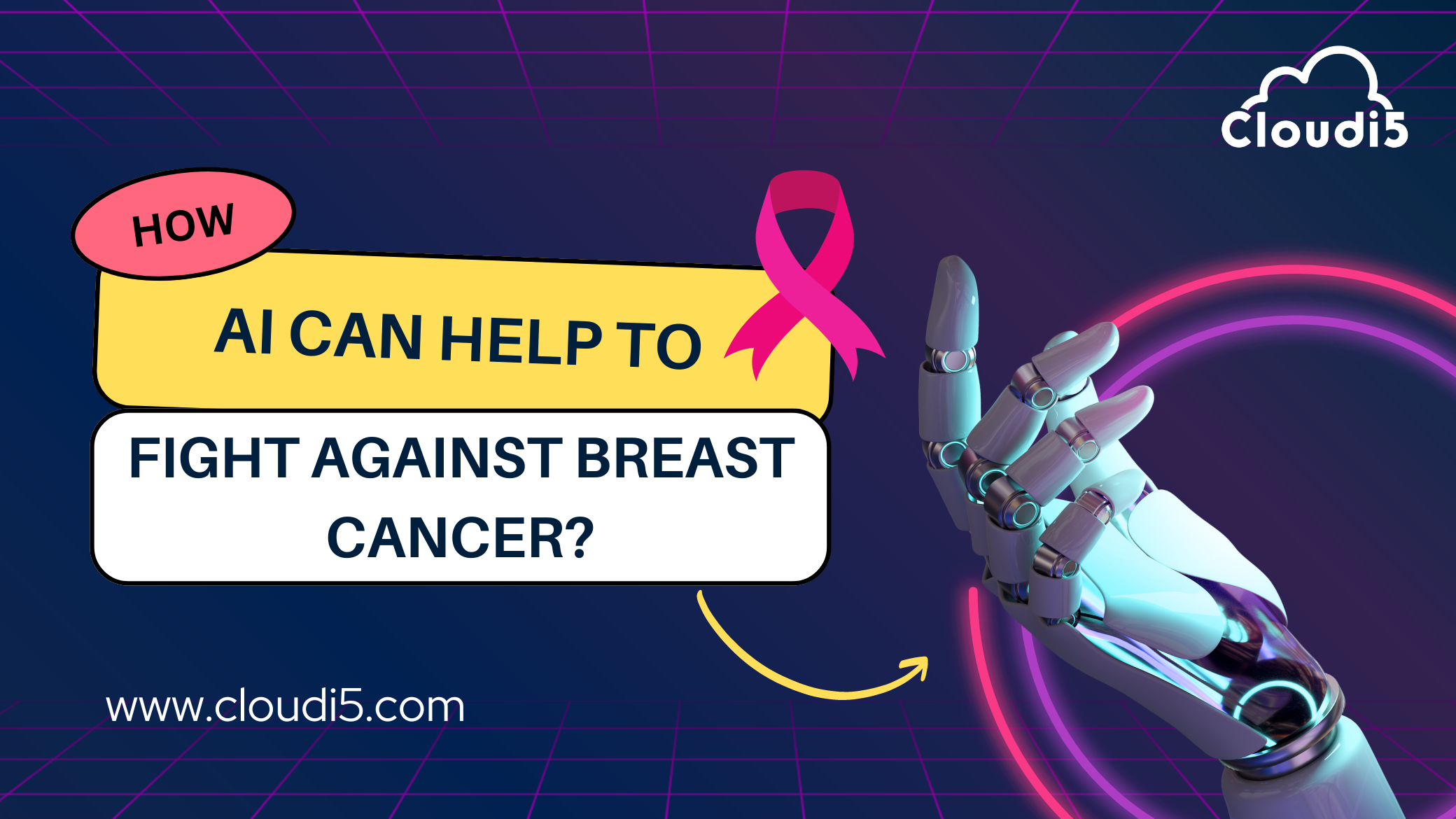
How AI Can Help To Fight Against Breast Cancer?
Introduction
Breast cancer is a complex disease involving abnormal cell growth in breast tissue. Breast cancer affects over 2.3 million people annually and is the most common cancer in adults. Breast cancer is the primary cause of female cancer-related fatalities in most nations, accounting for approximately 95% of cases.
On the other hand, AI is a technology that uses intelligent algorithms to analyze information and find patterns. Detecting breast cancer and accurately diagnosing it is essential for successful treatment. AI has the potential to help in these areas by analyzing data and finding critical patterns. This can help doctors find cancer sooner, make more accurate diagnoses, and create personalized treatment plans based on each patient's information.
Transforming Breast Cancer Screening with AI Technology
Breast cancer screening can undergo a significant transformation with the potential of AI technology. This transformation can bring about improvements in accuracy and efficiency.
AI can effectively analyze many mammography images by harnessing sophisticated machine learning algorithms. This analysis can assist radiologists in identifying abnormalities more precisely. The combination of AI's pattern recognition capabilities and the expertise of healthcare professionals holds the promise of enhancing screening accuracy and achieving consistently dependable outcomes.
Early Detection And Diagnosis:
AI algorithms play a crucial role in early breast cancer detection by analyzing medical images, such as mammograms, to identify possible abnormalities. They can detect subtle patterns, pinpoint areas of interest, evaluate individual risk factors, monitor changes over time, provide precise measurements, and employ deep learning techniques to recognize complex cancer indicators.
As a valuable tool, AI algorithms enhance the accuracy and efficiency of radiologists in detecting and diagnosing breast cancer.
Here are some ways AI algorithms are employed in this field:
1. Medical Imaging Analysis
2. Computer – Aided Detection(CAD)
3. Risk Assessment
4. Pathology Analysis
5. Data Integration and Decision Support
Enhancing Early Detection through Advanced Imaging Analysis:
AI algorithms are incredibly accurate in examining mammograms and other medical images. They can spot minor differences that might suggest the presence of breast cancer. By helping radiologists identify possible cancerous areas, AI assists in finding the disease early. It allows doctors to act quickly and could improve the chances of survival.
Essential AI Tools in Breast Cancer Detection
1. Computer-Aided Detection (CAD)
2. Convolutional Neural Networks (CNN)
3. Gene Expression Profiling
4. Automated Breast Ultrasound (ABUS)
5. Virtual Tumor Boards
By using AI's capabilities, medical professionals may improve accuracy, speed, and efficiency in battling breast cancer, resulting in improved patient outcomes and a favourable influence on the disease's battle.
AI web design tools can be instrumental in creating intuitive and user-friendly websites to disseminate information about breast cancer detection, treatment options, and support resources for patients and their families.
Role of AI in Breast Cancer Diagnosis
AI has a significant role in breast cancer diagnosis:
- It helps doctors by improving the accuracy and efficiency of the process.
- AI algorithms can analyze medical images like mammograms and ultrasounds to detect potential signs of breast cancer. They also consider a patient's medical history and genetics to assess individual risk and create personalized treatment plans.
- AI provides valuable support to doctors in making diagnoses and treatment decisions. It can even predict the chances of the cancer returning or progressing.
- Ultimately, AI improves the precision of breast cancer diagnosis and helps doctors provide better care
Improved Outcomes For Patients
The integration of AI technology in breast cancer screening holds the promise of improved outcomes for patients. Early detection through AI-assisted screening allows for timely intervention and personalized treatment plans, potentially leading to better prognoses.
Moreover, reducing false results helps minimize unnecessary follow-up procedures and interventions, reducing patient stress and healthcare costs. By enhancing accuracy and efficiency, AI technology aims to improve patient experience and long-term health outcomes.
Conclusion
In summary, artificial intelligence is revolutionizing the fight against breast cancer. By using advanced technology like AI to analyze medical images, help doctors make better diagnoses, plan personalized treatments, assess risks, and speed up research, we can improve how we detect, diagnose, and treat breast cancer. It means better patient care and a step closer to a future where breast cancer is not such a formidable opponent to overcome.
Trusted By












Leave Comments